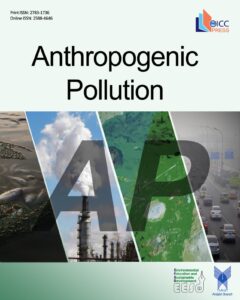Pollution and environmental risk assessment of potentially toxic elements in surface sediments of Zayandeh-Rood River, Isfahan Province, Iran
Authors
Abstract
The Zayandeh-Rood River (Isfahan Province, Iran) is of vital importance as a water source for various purposes, but it is facing adverse effects from human activities. This study focused on the surface sediment of 21 stations along the river to assess the concentration of potentially toxic elements (PTEs) and their environmental risk using the Geoaccumulation Index (Igeo), Enrichment Factor (EF), Pollution Load Index (PLI), and Potential Ecological Risk Index (RI). The mean concentration of the PTEs (mg/kg) was ranked as follows: Cd (0.34)< As (9.73)< Pb (10.95)< Co (11.91)< Cu (31.14)< Ni (31.90)< Zn (61.33)< Cr (96.95)< V (125.09)< Mn (707.76). Positive correlation coefficients were found among all the PTEs, while their relationships with the sediment physicochemical characteristics varied considerably, indicating that various interacting factors might influence the deposition and mobility of PTEs in the river. The river was classified as having moderate to low contamination (Igeo index) and minimal-to-moderate enrichment (EF index) except for Cd and As which exhibited extremely high enrichment and strong pollution in the upstream zone, where agricultural activities dominate. Therefore, managing agricultural practices and reducing the excessive use of PTE-containing pesticides and insecticides should be a primary focus to protect the Zayandeh-Rood River from further contamination.



